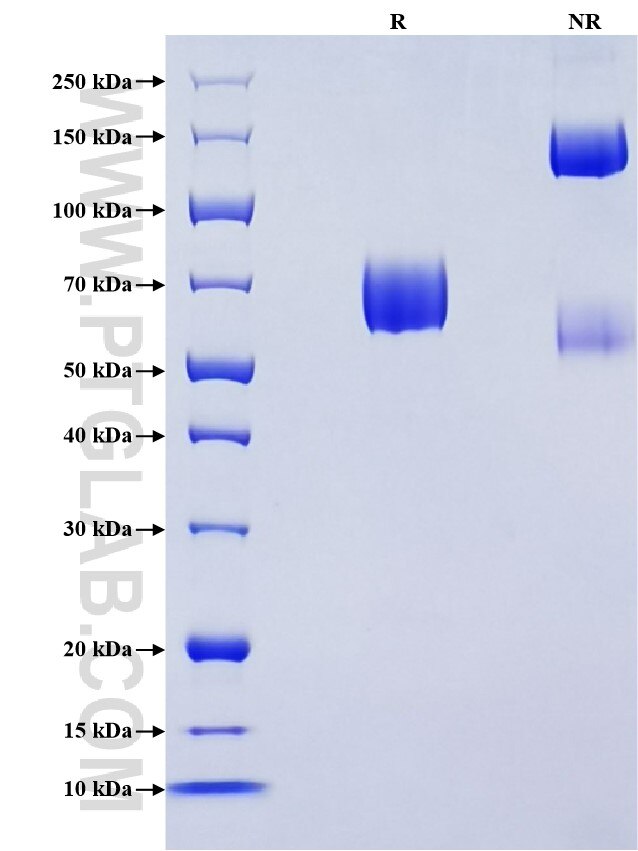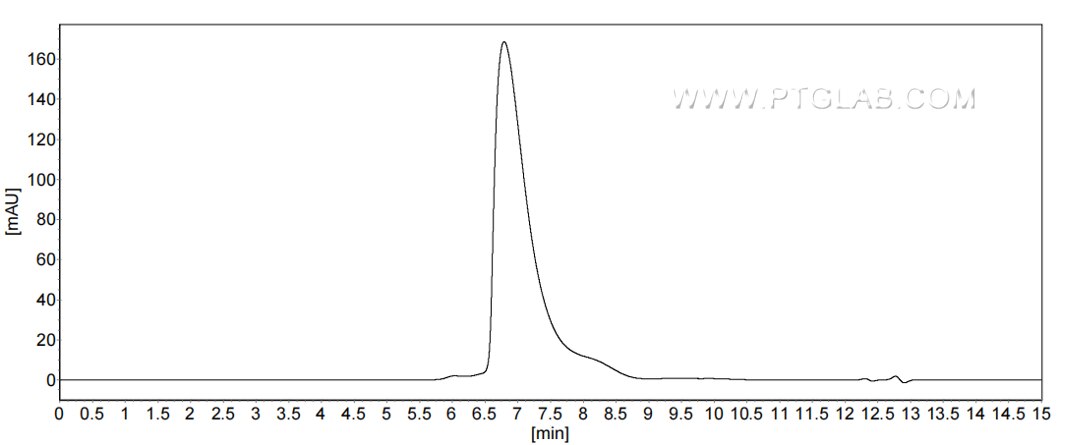Recombinant Mouse SLAM/CD150 protein (rFc Tag) (HPLC verified)
Species
Mouse
Purity
>90 %, SDS-PAGE
>90 %, SEC-HPLC
Tag
rFc Tag
Activity
not tested
Cat no : Eg2787
Validation Data Gallery
Product Information
| Purity | >90 %, SDS-PAGE >90 %, SEC-HPLC |
| Endotoxin | <0.1 EU/μg protein, LAL method |
| Activity |
Not tested |
| Expression | HEK293-derived Mouse SLAM protein Thr25-Pro242 (Accession# Q9QUM4-1) with a rabbit IgG Fc tag at the C-terminus. |
| GeneID | 27218 |
| Accession | Q9QUM4-1 |
| PredictedSize | 50.2 kDa |
| SDS-PAGE | 60-80 kDa, reducing (R) conditions |
| Formulation | Lyophilized from 0.22 μm filtered solution in PBS, pH 7.4. Normally 5% trehalose and 5% mannitol are added as protectants before lyophilization. |
| Reconstitution | Briefly centrifuge the tube before opening. Reconstitute at 0.1-0.5 mg/mL in sterile water. |
| Storage Conditions |
It is recommended that the protein be aliquoted for optimal storage. Avoid repeated freeze-thaw cycles.
|
| Shipping | The product is shipped at ambient temperature. Upon receipt, store it immediately at the recommended temperature. |
Background
SLAMF1 (Signaling Lymphocytic Activation Molecule Family Member 1), also known as CD150, is a protein-coding gene that plays a significant role in the immune system, particularly in the activation and regulation of lymphocytes. SLAMF1 is predominantly expressed in hematopoietic cells, including NK cells, T cells, dendritic cells (DCs), neutrophils, macrophages, and notably mast cells (MCs) and eosinophils (Eos). Its expression is crucial for the migration of dendritic cells and macrophages, enhancing phagocytosis by macrophages, and Treg and T cell functions. SLAMF1 is a type I transmembrane glycoprotein with an extracellular region containing an N-terminal V-Ig domain followed by a C2-Ig domain, a transmembrane region, and an intracellular cytoplasmic tail containing tyrosine-based switch motifs (ITSM). It is part of the CD2 subfamily of the immunoglobulin (Ig) superfamily and is involved in both innate and adaptive immune responses through homophilic or heterophilic interactions.
References:
1. Idit Shachar. et al. (2019). Clin Immunol. 204:23-30. 2. Jennifer L Cannons. et al. (2011). Annu Rev Immunol. 29:665-705. 3. Christopher C Fraser. et al. (2002). Immunogenetics. 53(10-11):843-850.


